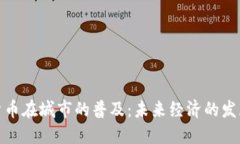引言
数字货币近年来伴随着区块链技术的发展而迅速崛起,成为全球投资者关注的焦点。在众多的数字货币共识机制中,权益证明(Proof of Stake,简称PoS)作为一种高效能低能耗的共识机制,逐渐赢得了重视。本文将详细探讨PoS的工作原理、比较它与其他共识机制的优缺点,以及它对整个区块链生态的影响。
什么是权益证明(PoS)
权益证明(PoS)是一种区块链共识机制,它通过持币者的资产数量来决定其创建新的区块或验证交易的权利。与传统的工作量证明(Proof of Work,PoW)机制不同,PoS不依赖于矿工通过计算能力争夺区块的奖励,而是根据持有的数字货币数量和持币时间来分配验证权。
PoS的基本原理
在PoS机制中,每个参与者都可以根据他们所持有的数字货币数量来获取创建新区块的机会。持有的代币越多,验证新块的概率就越高。PoS的核心思想是,持有更多代币的用户在维护网络安全和正常运作方面的动机更加强烈。
针对PoS的演变与发展

PoS最早在2011年由Sunny King和Scott Nadal提出,并逐渐被多种加密货币采纳。在PoS机制随着以太坊2.0的引入而得到广泛关注后,越来越多的区块链项目开始采用或考虑采用这一机制,以期提高效率和降低能耗。
PoS与PoW的对比分析
效率和能源消耗
与PoW机制相比,PoS在能源消耗方面具备显著优势。PoW依赖于大量的计算能力和电力消耗,导致许多环境保护倡议者的担忧。而PoS利用持币者的代币进行验证,极大减少了对能源的需求(尤以参与验证的成本而言)。
安全性与去中心化

PoW系统的安全性依赖于庞大的计算能力,而PoS的安全性则依赖于用户的经济利益。如果攻击者想控制网络,他们需要持有网络中大量的代币,这无疑是一笔巨大的投入。而对于去中心化的影响,虽然PoS初衷是为了提高区块链的去中心化,但由于代币集中度影响,依然存在一定的挑战。
PoS的优势与挑战
优势
PoS的主要优势包括如下几点:
- 能源效率高:相较于PoW,PoS显著减少了能耗,这使得参与网络维护的门槛降低。
- 资产的增值潜力:持有代币的用户可以通过参与区块验证获取奖励,从而享受资产增值的福利。
- 更快的确认时间:由于减少了挖矿的过程,区块确认时间往往较PoW机制更快。
挑战
尽管PoS具备多个优点,但仍面临诸多挑战:
- 代币集中化如果持币者相对集中,可能使网络遭受攻击的风险增加。
- 现实应用障碍:新兴的PoS项目需要时间去进行实际应用与推广,现有使用者也需提升对其理解。
- 治理在某些情况下,持有者之间的利益可能冲突,导致更新与治理效能下降。
PoS对数字货币生态的影响
PoS的实施不仅改变了网络内部的治理结构,还对投资者的行为、市场动态和监管环境产生了深远的影响。
投资行为的变化
由于PoS允许持有者在其持有的代币上获得利息,从而鼓励长期持有。与PoW挖矿所需的高风险前期投入不同,PoS给中小投资者提供了相对容易参与的机会。
市场动态的改变
在PoS环境下,代币的价格波动可能会受到供需关系的影响,持有代币的人会因获得区块奖励而导致市场上代币供应的增加,可能改变整体市场价格的趋势。
监管与合规发展
随着PoS的普及,监管机构可能需要重新评估如何对待这些新兴的经济模型。对代币利息的课税、合规问题等都需要在新的生态背景下进行深入探讨。
可能相关的问题
1. PoS如何防止50%攻击?
An effective PoS system must incorporate mechanisms that prevent a malicious user from controlling a majority of the stake in the network. The economically rational approach means that attempting to overpower the network can involve spending a significant amount of assets, thus diminishing profitability. The inherent design of PoS intends to make potential attacks prohibitively costly, which acts as a deterrent. In addition, many PoS protocols incorporate "slashing", which involves penalizing malicious actors by destroying a portion of their stake if they engage in harmful activities.
2. PoS在实际应用中如何选择节点?
In practical PoS applications, the selection of nodes for forging or validating blocks can depend on various criteria such as the amount of stake held, the duration of the stake, and in some cases, randomization techniques are applied to provide fair chances for short-term stakeholders, preventing long-term stakeholdings from monopolizing the block formation process. This approach helps in enhancing the decentralization of the network while maintaining its efficiency.
3. 如何评估PoS网络的去中心化程度?
Measuring the degree of decentralization in a PoS network involves analyzing distribution metrics of staked tokens among participants. Tools such as node count, stake distribution, and community governance participation can be evaluated. A well-distributed stake leads to a lower probability of collusion among validators, preserving the network's foundational principle of decentralization.
4. PoS的未来发展趋势是什么?
The future development of PoS is mainly characterized by several trends such as further enhancements on security techniques against potential attacks and the integration of hybrid models that combine PoW and PoS characteristics. There will be a growing focus on environmental concerns as energy-efficient consensus models become even more critical in public discourse. Lastly, regulatory frameworks will likely evolve, driving PoS systems to adapt to new compliance and reporting standards.
结论
权益证明(PoS)作为一种区块链中的共识机制,展现出其独特的优势和面临的挑战。随着越来越多的项目进行转型与实施,PoS将在提升区块链网络的效率和降低能耗方面发挥不可或缺的角色。未来,通过不断的实践、技术革新和政策调整,权益证明有望在数字货币的生态系统中占据更加重要的位置。



